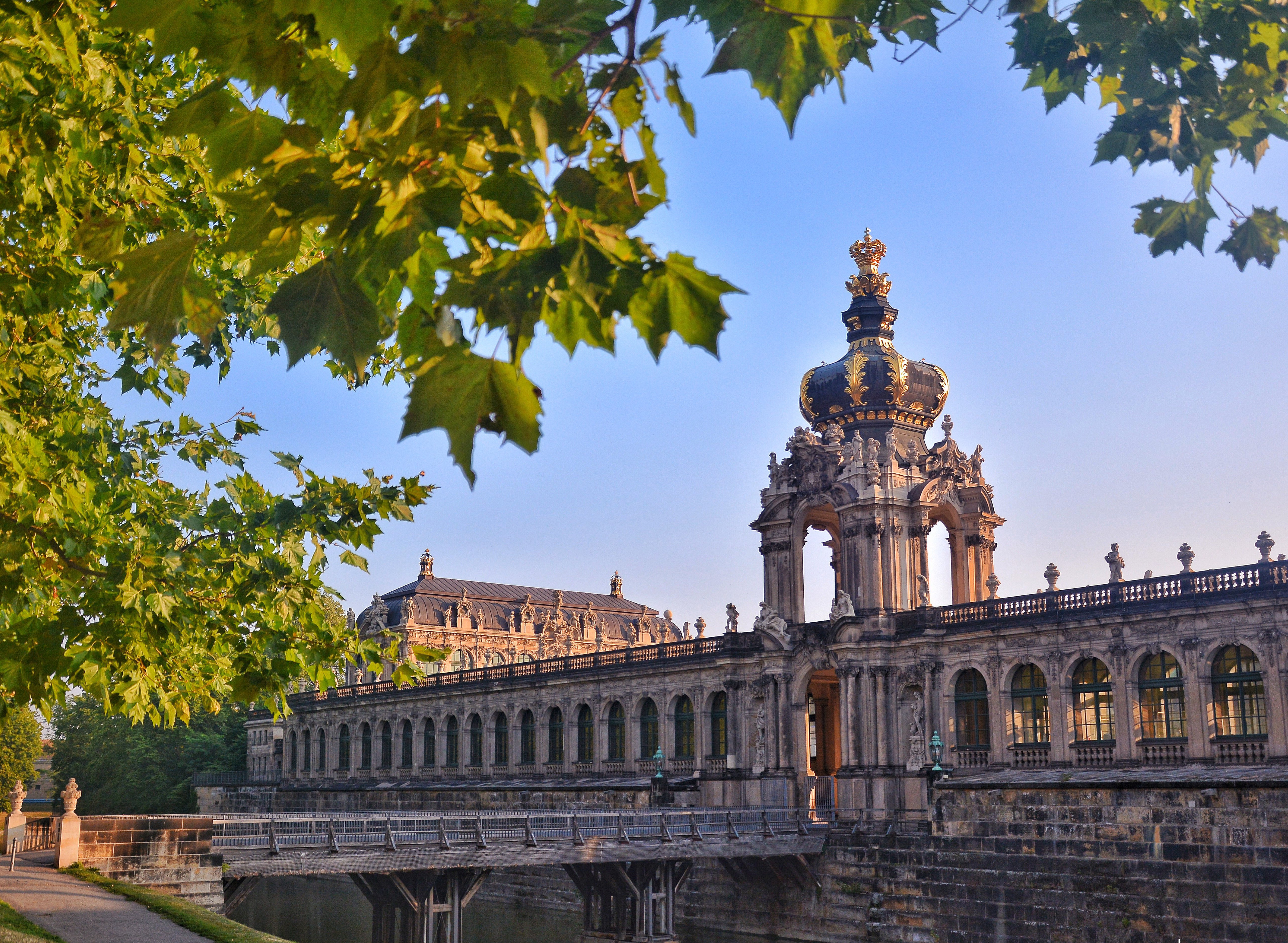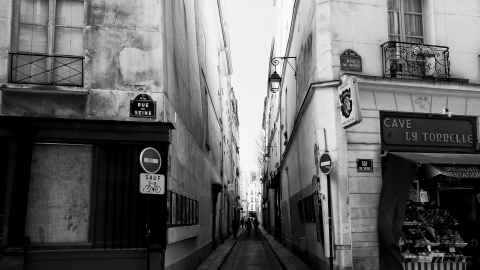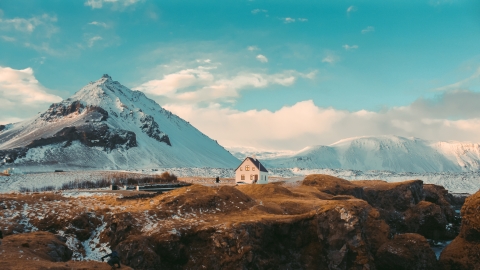When it comes to Germany tourism, surely all of us will almost immediately imagine in our minds the image of the capital Berlin with its historical landmarks, the city of Frankfurt with its tall buildings, the port city of Hamburg with its bustling ships or the city of Munich with its traditional beer festival, famous all over the world. Yet absolutely no one thinks of Dresden, the capital of the state of Saxony located in the east of Germany, which is only about 3 hours away from Berlin by bus.
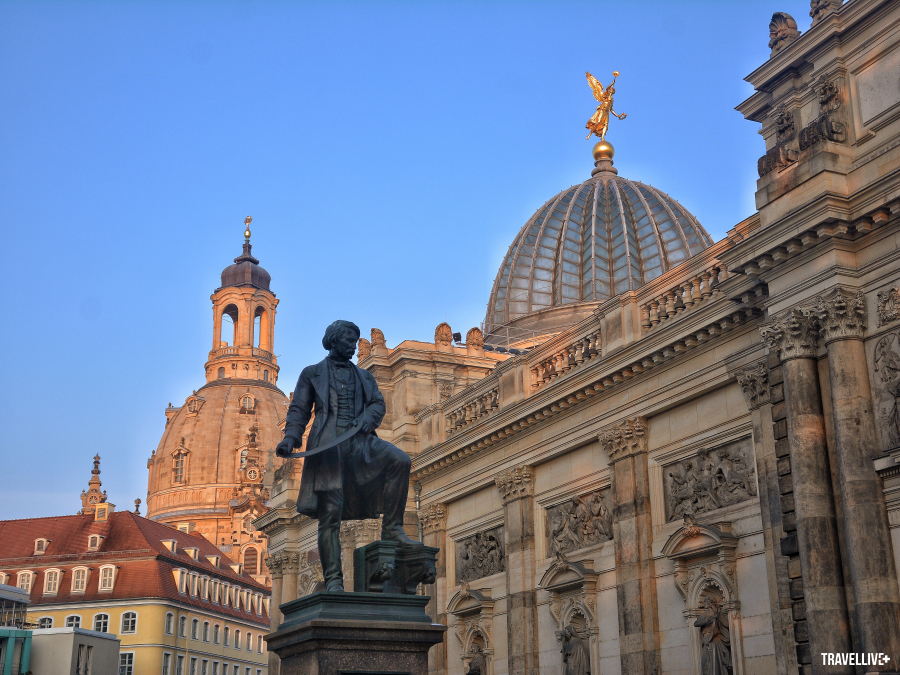
Perhaps this is not a big city for tours to target, so most people do not know about its existence. Even I myself was very confused when I first heard the name Dresden. I had to spend the whole afternoon searching for information about the city online before the trip. Although I had searched for quite a lot of information and looked at many pictures on travel websites, when the bus started rolling slowly on the Carola Bridge to enter Dresden Altstadt, I was really surprised, my eyes were wide open, my mouth was open and I exclaimed with excitement at the beautiful beauty of the city, of the ancient architectural works appearing on the banks of the poetic Elbe River.

Because Dresden was once the place where the kings of Saxony lived and worked, this is not only a city with poetic natural scenery but also has a rich history of culture, architecture and painting. Dresden consists of two main areas: Altstadt (old town) and Neustadt (new town), divided by the gentle winding Elbe River. While Altstadt has an ancient look with many old architectural works and historical relics from the kings' dynasties; on the other side of the river, Neustadt wears a colorful, bustling shirt symbolizing a modern, youthful and vibrant life.
Getting out of the car, taking a deep breath, I started my "swinging" journey by visiting interesting places with typical Baroque architecture in the old town - Altstadt.
Frauenkirche Church
This is the tallest building and also the symbol of the city of Dresden. This church was destroyed in World War II, but was restored by donations from people around the world in 1994. It was not until 2005 that Notre Dame Cathedral reopened to visitors.
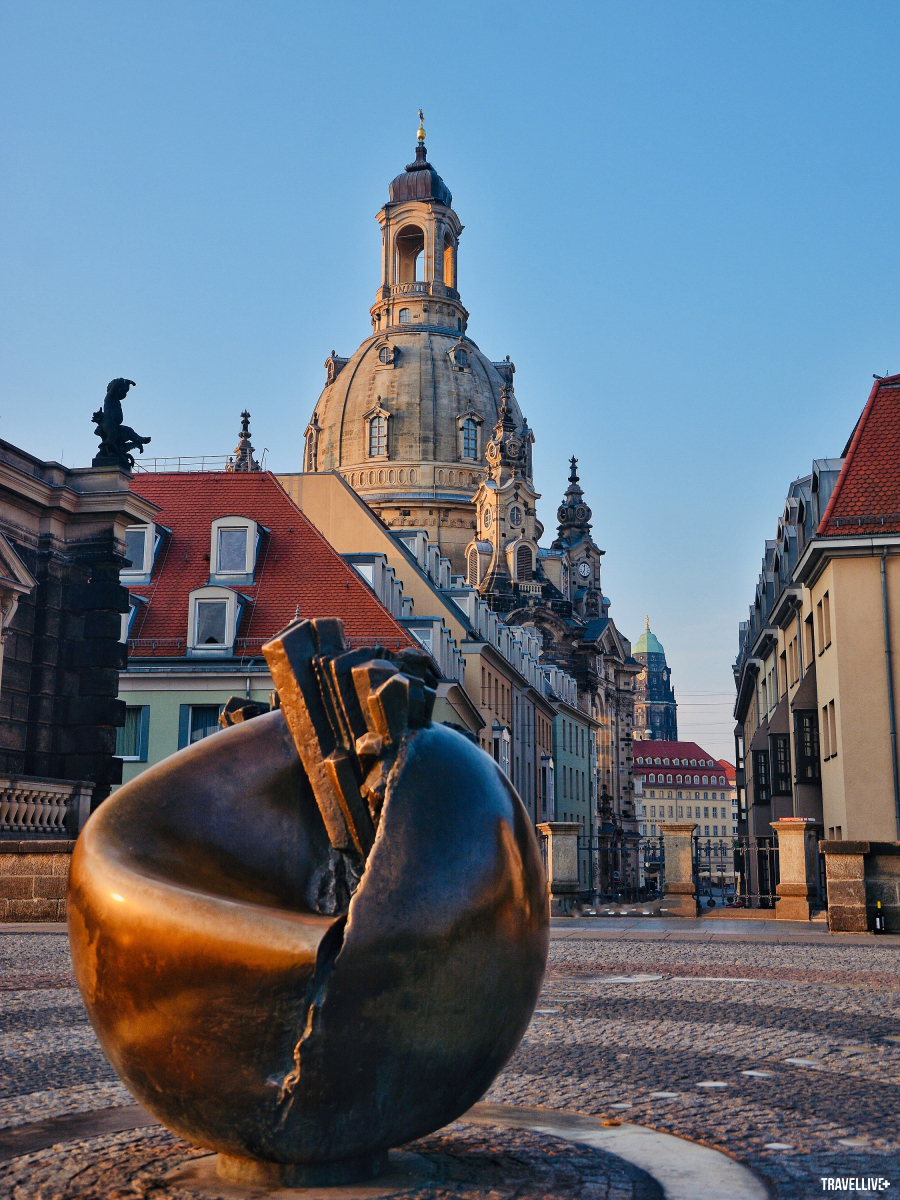
Zwinger Palace
Also known as the King's Palace or the Summer Palace, the Zwinger is one of the world's finest Baroque and Rococo palaces. Today, it houses several of the city's art museums.
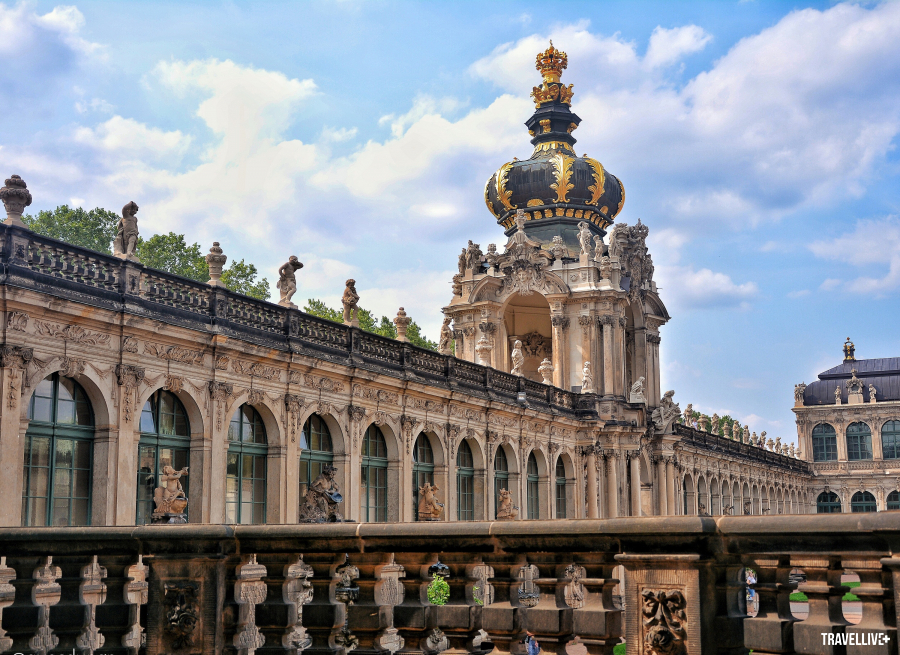
Semperoper Theatre
Located right next to the Zwinger Palace, the Semperoper is one of the most famous opera houses in the world, built in 1878. Inside, most of the decorations are gilded with exquisite gold. Notably, this place had to be rebuilt for the third time after being destroyed twice in war.

Großer Garten
A baroque-style park in the center of Dresden, with an area of about 1.8 km², it was once a summer vacation destination, hosting banquets for the royal family and dukes at that time.
Dresden Zoo
The Dresden Zoo, located south of the Großer Garten, was opened in 1861 and is the fourth oldest zoo in Germany. Around 3,000 animals of nearly 400 species from all over the world are kept and cared for here.
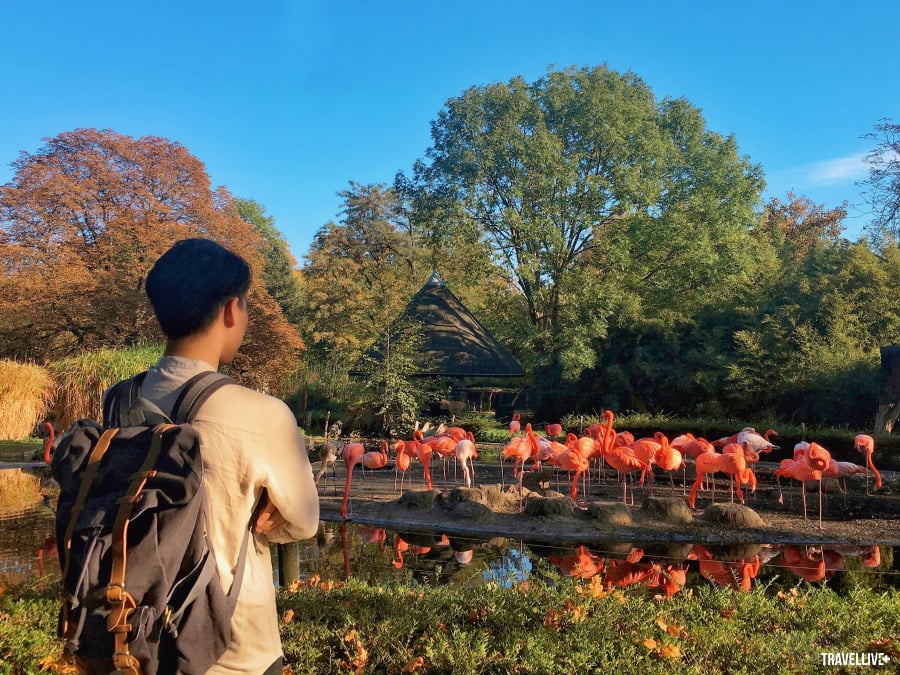
Dresdner Residenzschloss Palace
The palace was the residence and workplace of the kings of Saxony and is known as one of the oldest buildings in the city. Although severely damaged during the war, it has now been restored and renovated. It is home to many museums and art galleries in the city.

Grünes Gewölbe Museum
The museum houses more than 4,000 precious artifacts, making it one of the largest jewelry museums in Europe. Among them, the most prominent is the “Golden Coffee Set” crafted by the famous goldsmith of the royal court at that time - Johann Melchior Dinglinger.
Fürstenzug Wall
One of the famous tourist attractions in Dresden, the Fürstenzug Wall was built to celebrate the 800th anniversary of the Wettin dynasty. This is the world's largest porcelain painting with an area of nearly 1,000 m2, 100 m long and using up to 23,000 pieces of Meissen porcelain. On this masterpiece are the images of 35 kings of Saxony (from 1127 to 1873).
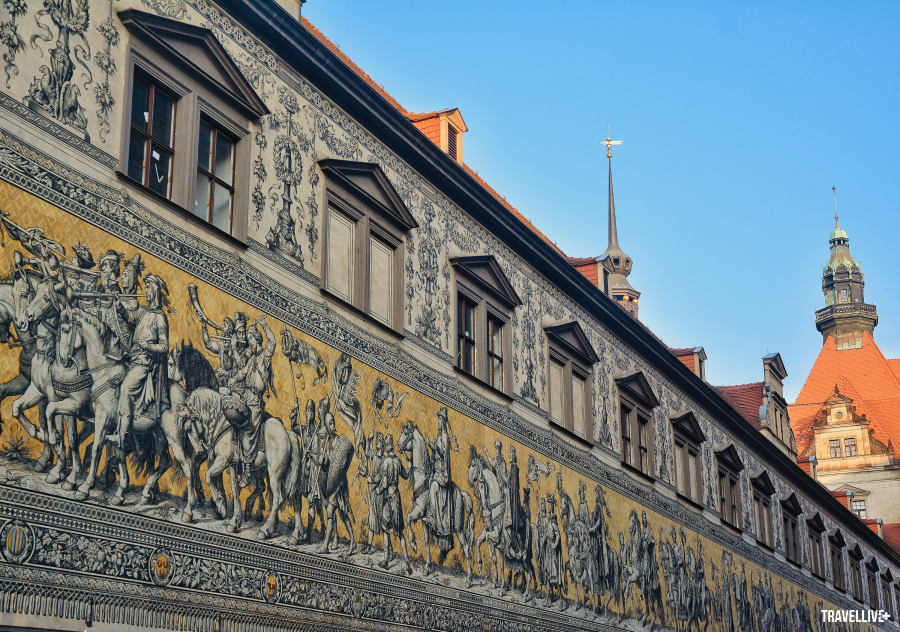
Saxon Switzerland National Park
Located just 40 minutes by train from Dresden, the Saxon Switzerland National Park is a vast area of about 36,000 hectares. It is home to forests and strangely shaped sandstone rocks that date back to the Cretaceous period. In addition, the Bastei stone bridge and the Königstein fortress are also tourist attractions when visiting this vast area.
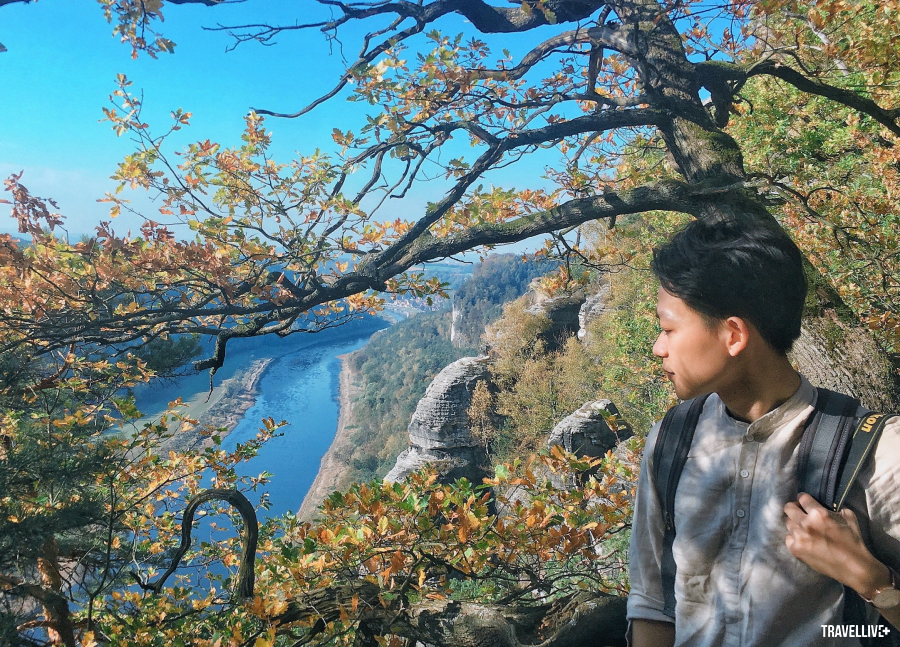
Moritzburg Castle
Located about 15 km northwest of Dresden, the symmetrical castle is located in an artificial lake. With beautiful scenery in all four seasons from spring to winter, this castle was once chosen as the setting for the movie “Three Nuts for Cinderella”.

After the trip, Dresden, from a strange place, immediately became one of the most impressive cities I have ever had the chance to explore. There are few cities in Germany that have a harmonious combination of contemplation (Altstadt) and hustle and bustle (Neustadt), between immense nature and sophisticated, civilized man-made architectural works like Dresden!





